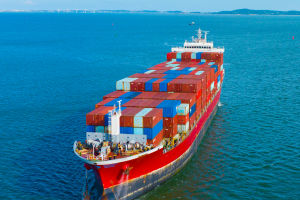The Golden Gate Bridge is located at the entrance to the Golden Gate Strait, in the San Francisco Bay Area, California, USA.
It is one of the world's most famous bridges, serving as a vital link between the Central Valley, known as the world's largest granary, and the Pacific Ocean.
The San Francisco Bay Area, one of the three major Bay areas in the world, is a powerhouse in the fields of science and education. Home to renowned institutions like Silicon Valley, and Stanford University, it has long dominated the forefront of innovation and education globally.
Supported by the high agricultural output of the Central Valley and its efficient research and education systems, California, particularly San Francisco and its surrounding areas, has consistently led the United States in terms of GDP, earning its reputation as the world's fifth-largest economy. The Golden Gate Strait was crucial in facilitating transportation both within and outside the Central Valley.
Initially serving as a maritime passage for the Central Valley, the Golden Gate Strait gained prominence during the California Gold Rush era, earning its moniker "Golden Gate." With the population growth in California, characterized by rugged mountainous terrain to the east and along the Pacific coastline, the San Francisco Bay became the natural cradle for urban development, giving rise to the San Francisco Bay Area.
As the San Francisco Bay Area continued to expand, the need for a bridge spanning the 1.6-kilometer-wide Golden Gate Strait became imperative to connect the northern and southern land masses.
Otherwise, land-based transportation on either side of the strait would require a detour of over two hundred kilometers, which was highly impractical. Thus, as early as 1872, proposals were made for constructing a transbay bridge.
While a 1.6-kilometer-long bridge might not have posed significant engineering challenges even over a century ago, the construction of the Golden Gate Bridge was delayed for several decades, finally commencing in 1933 and completing four years later.
The bridge, utilizing only two main towers and employing a suspension design, boasts a main span of 1280 meters, with the bridge deck rising 67 meters above the water surface and the towers reaching a height of 227 meters above the water. It set numerous world records, some of which remained unbroken until 1993.
The decision to build such a monumental structure with extensive spans and towering towers was not merely to achieve Guinness World Records. Rather, it was a response to the hydrological conditions of the Golden Gate Strait. The strait's narrow passage, deep sea trench, and strong tidal currents posed significant challenges.
The substantial height of the bridge deck ensured continued maritime access to the Bay Area, while the extensive spans and tall towers were necessary to effectively anchor the bridge cables, given the immense distance and depth of the strait.
The Golden Gate Strait, characterized by its deep sea trench and strong currents, presented a formidable engineering challenge, even by today's standards. Therefore, the decision to construct a bridge with such monumental proportions was a testament to human ingenuity and perseverance, ultimately resulting in the iconic Golden Gate Bridge.
As a marvel of modern engineering, the Golden Gate Bridge inspires awe and admiration, embodying the spirit of progress and connectivity.


